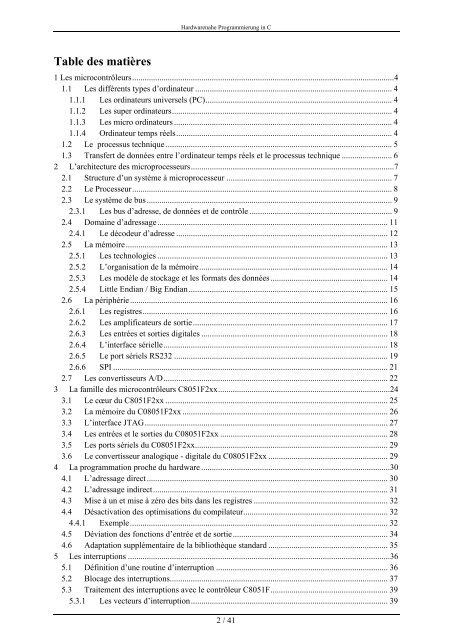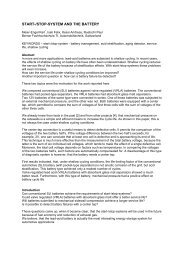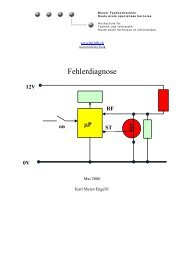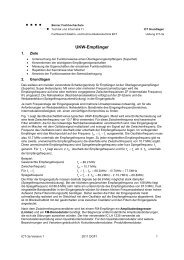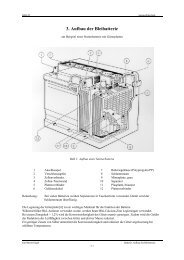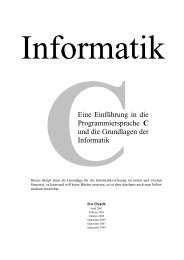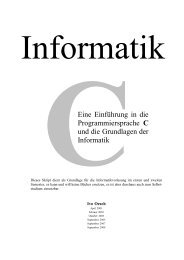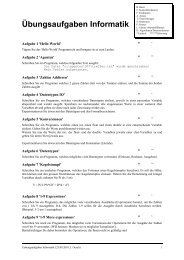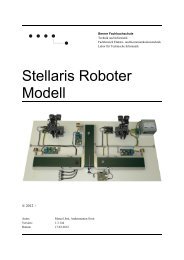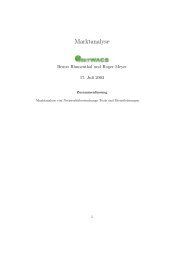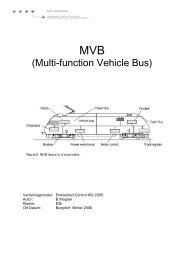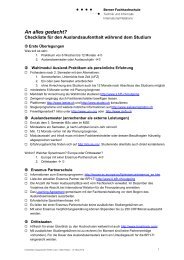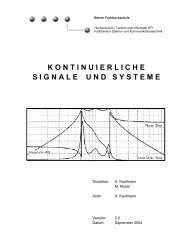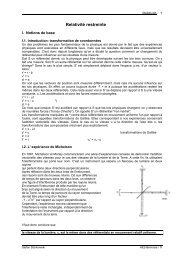Programmation proche du hardware avec le kit de développement ...
Programmation proche du hardware avec le kit de développement ...
Programmation proche du hardware avec le kit de développement ...
You also want an ePaper? Increase the reach of your titles
YUMPU automatically turns print PDFs into web optimized ePapers that Google loves.
Tab<strong>le</strong> <strong>de</strong>s matières<br />
Hardwarenahe Programmierung in C<br />
1 Les microcontrô<strong>le</strong>urs.............................................................................................................................4<br />
1.1 Les différents types d’ordinateur .............................................................................................. 4<br />
1.1.1 Les ordinateurs universels (PC)......................................................................................... 4<br />
1.1.2 Les super ordinateurs......................................................................................................... 4<br />
1.1.3 Les micro ordinateurs ........................................................................................................ 4<br />
1.1.4 Ordinateur temps réels....................................................................................................... 4<br />
1.2 Le processus technique ............................................................................................................ 5<br />
1.3 Transfert <strong>de</strong> données entre l’ordinateur temps réels et <strong>le</strong> processus technique ........................ 6<br />
2 L’architecture <strong>de</strong>s microprocesseurs.................................................................................................7<br />
2.1 Structure d’un système à microprocesseur ............................................................................... 7<br />
2.2 Le Processeur............................................................................................................................ 8<br />
2.3 Le système <strong>de</strong> bus..................................................................................................................... 9<br />
2.3.1 Les bus d’adresse, <strong>de</strong> données et <strong>de</strong> contrô<strong>le</strong> .................................................................... 9<br />
2.4 Domaine d’adressage.............................................................................................................. 11<br />
2.4.1 Le déco<strong>de</strong>ur d’adresse ..................................................................................................... 12<br />
2.5 La mémoire............................................................................................................................. 13<br />
2.5.1 Les technologies .............................................................................................................. 13<br />
2.5.2 L’organisation <strong>de</strong> la mémoire.......................................................................................... 14<br />
2.5.3 Les modè<strong>le</strong> <strong>de</strong> stockage et <strong>le</strong>s formats <strong>de</strong>s données ........................................................ 14<br />
2.5.4 Litt<strong>le</strong> Endian / Big Endian............................................................................................... 15<br />
2.6 La périphérie........................................................................................................................... 16<br />
2.6.1 Les registres..................................................................................................................... 16<br />
2.6.2 Les amplificateurs <strong>de</strong> sortie............................................................................................. 17<br />
2.6.3 Les entrées et sorties digita<strong>le</strong>s ......................................................................................... 18<br />
2.6.4 L’interface sériel<strong>le</strong>........................................................................................................... 18<br />
2.6.5 Le port sériels RS232 ...................................................................................................... 19<br />
2.6.6 SPI ................................................................................................................................... 21<br />
2.7 Les convertisseurs A/D........................................................................................................... 22<br />
3 La famil<strong>le</strong> <strong>de</strong>s microcontrô<strong>le</strong>urs C8051F2xx..................................................................................24<br />
3.1 Le cœur <strong>du</strong> C8051F2xx .......................................................................................................... 25<br />
3.2 La mémoire <strong>du</strong> C08051F2xx .................................................................................................. 26<br />
3.3 L’interface JTAG.................................................................................................................... 27<br />
3.4 Les entrées et <strong>le</strong> sorties <strong>du</strong> C08051F2xx ................................................................................ 28<br />
3.5 Les ports sériels <strong>du</strong> C08051F2xx............................................................................................ 29<br />
3.6 Le convertisseur analogique - digita<strong>le</strong> <strong>du</strong> C08051F2xx ......................................................... 29<br />
4 La programmation <strong>proche</strong> <strong>du</strong> <strong>hardware</strong> ..........................................................................................30<br />
4.1 L’adressage direct ................................................................................................................... 30<br />
4.2 L’adressage indirect................................................................................................................ 31<br />
4.3 Mise à un et mise à zéro <strong>de</strong>s bits dans <strong>le</strong>s registres ................................................................ 32<br />
4.4 Désactivation <strong>de</strong>s optimisations <strong>du</strong> compilateur..................................................................... 32<br />
4.4.1 Exemp<strong>le</strong>........................................................................................................................... 32<br />
4.5 Déviation <strong>de</strong>s fonctions d’entrée et <strong>de</strong> sortie.......................................................................... 34<br />
4.6 Adaptation supplémentaire <strong>de</strong> la bibliothèque standard ......................................................... 35<br />
5 Les interruptions .............................................................................................................................36<br />
5.1 Définition d’une routine d’interruption .................................................................................. 36<br />
5.2 Blocage <strong>de</strong>s interruptions........................................................................................................ 37<br />
5.3 Traitement <strong>de</strong>s interruptions <strong>avec</strong> <strong>le</strong> contrô<strong>le</strong>ur C8051F........................................................ 39<br />
5.3.1 Les vecteurs d’interruption.............................................................................................. 39<br />
2 / 41


